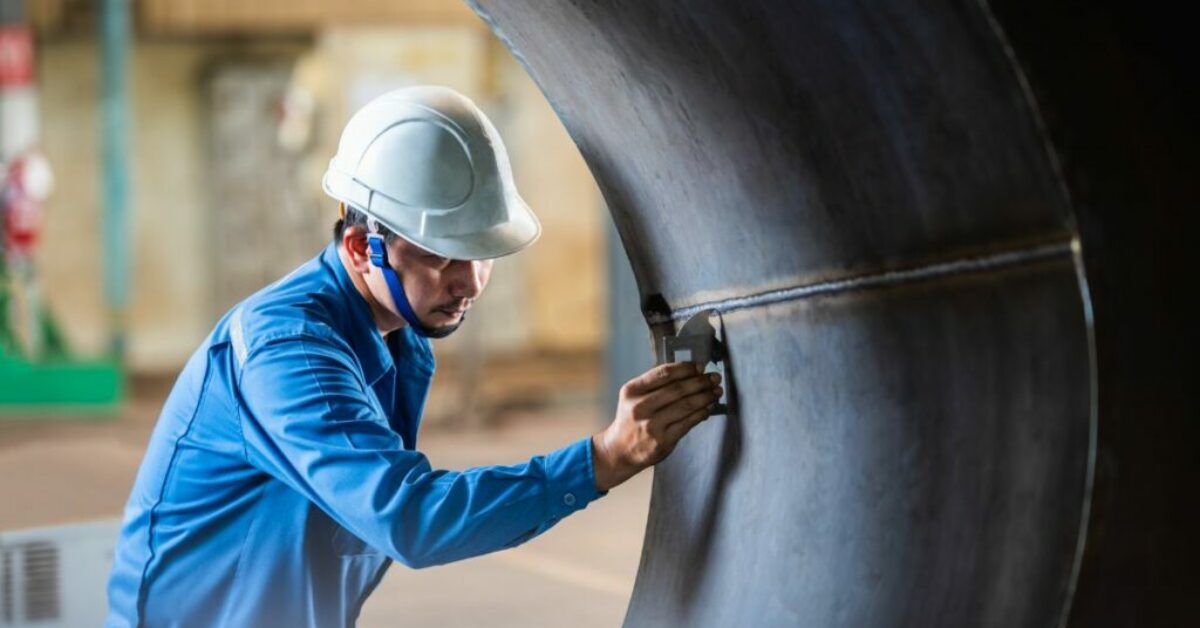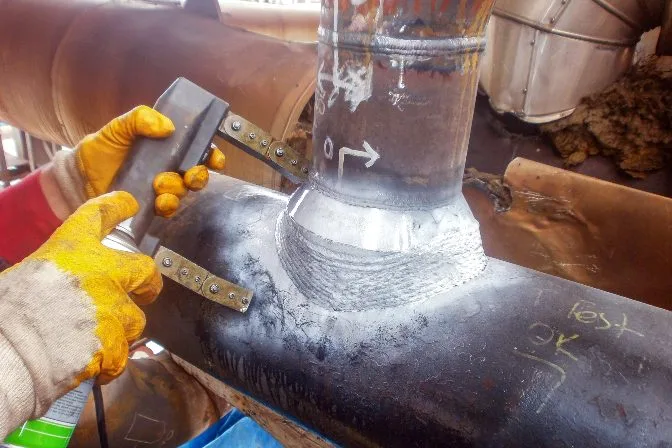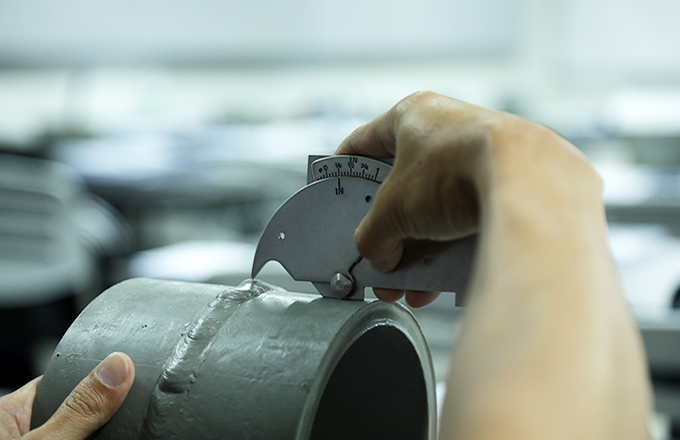The Significance of Normal Welding Inspection Milwaukee for Compliance
The Significance of Normal Welding Inspection Milwaukee for Compliance
Blog Article
A Thorough List for Effective Welding Inspection Practices
In the realm of welding, the honesty of structures is critical, necessitating a strenuous strategy to examination practices. Discovering these critical parts can yield understandings that greatly impact welding operations.
Recognizing Welding Requirements
Welding requirements play an important function in making sure the top quality and safety of welded components and frameworks. These standards establish the requirements for materials, procedures, screening, and evaluation, thereby supplying a structure for constant quality assurance in welding procedures. Numerous organizations, including the American Welding Culture (AWS), the International Company for Standardization (ISO), and the American Society of Mechanical Engineers (ASME), have created comprehensive standards that govern different facets of welding.
Understanding welding standards is vital for specialists in the area, as adherence to these standards lessens the threat of issues and failures in bonded joints. These requirements cover particular requirements for weld quality, consisting of acceptable resistances, the sort of welding strategies to be utilized, and the credentials required for examiners and welders.

Pre-Welding Assessment Steps
Prior to any kind of welding process commences, a thorough pre-welding assessment is important to determine prospective issues that may endanger the high quality of the weld. This first step works as a crucial structure for making certain compliance with applicable welding codes and standards.
The primary step in the pre-welding assessment is to validate the materials being used. This consists of checking for the correct kind and quality of metals as specified in the job paperwork. Next off, it is critical to check the fit-up of the elements to make sure correct alignment and joint arrangement. Imbalance can lead to inadequate infiltration and architectural weak points.
In addition, reviewing the cleanliness of the surface areas is crucial; impurities such as paint, corrosion, or oil can adversely influence the high quality of the weld. Following this, a comprehensive analysis of the welding devices need to be carried out, guaranteeing that it is calibrated and in good functioning condition.
Finally, examining the certifications of the welding personnel is crucial. Welders need to have the essential accreditations and experience to perform the particular welds needed for the project. By adhering to these pre-welding inspection actions, the probability of issues and failures in the final weld can be substantially lowered.

In-Process Inspection Techniques
In-process assessment techniques play a vital duty in ensuring the integrity and top quality of welds as they are being performed. These methods enable inspectors to recognize problems or inconsistencies from specifications in actual time, thus making sure and protecting against pricey repair services adherence to style needs.
One secret technique includes visual evaluation, where inspectors evaluate the weld bead for harmony, infiltration, and correct account. This can be matched by the use assesses to determine weld dimensions, ensuring compliance with predetermined tolerances. Furthermore, the application of non-destructive testing (NDT) methods, such as ultrasonic screening or magnetic particle screening, during the welding procedure can expose subsurface imperfections that might not show up on the surface.
Another important facet is monitoring welding criteria, including voltage, amperage, and take a trip rate. Consistency in these criteria is important for attaining optimum weld high quality. Recording these parameters throughout the welding operation provides a traceable document for future reference.
Educating employees in appropriate assessment techniques and the use of proper tools enhances the performance of in-process evaluations. By incorporating these methods, organizations can accomplish better welds, minimize rework, and ultimately guarantee the safety and dependability of bonded frameworks.
Post-Welding Quality Checks
Complying with the conclusion of welding operations, post-welding top quality checks are crucial to validate that the welds meet all defined standards and needs. These checks are vital for making sure the visit site honesty and resilience of the bonded joints. The assessment procedure commonly starts with an aesthetic exam, evaluating for surface flaws such as splits, porosity, or incomplete fusion.
Subsequently, non-destructive screening (NDT) methods, such as ultrasonic testing, radiographic testing, or magnetic fragment testing, may be utilized to identify inner imperfections that are not visible to the naked eye. Each approach has its distinct advantages and is selected based on the weld's place, material type, and the nature of the application.
Examining the mechanical residential or commercial properties of the weld, consisting of tensile strength and ductility, can supply more guarantee of efficiency under operational problems. On the whole, complete post-welding evaluations are essential for maintaining adherence, security, and efficiency to regulatory and sector criteria.
Paperwork and Reporting
Just how can efficient documentation and reporting boost the welding assessment procedure? Precise documents and detailed reporting are crucial elements that make sure the honesty and high quality of welding operations. Welding Inspection Milwaukee. They work as an official record of inspection searchings for, promoting liability and traceability in conformity with market standards

A well-structured reporting system makes it possible for assessors to plainly connect any areas, non-conformances, or discrepancies requiring renovation. This openness cultivates an environment of continual improvement, as stakeholders can conveniently examine past efficiency and execute rehabilitative activities.
Furthermore, efficient paperwork includes thorough records such as welding procedure specifications (WPS), welder certifications, and assessment lists. check out this site These elements supply a framework for evaluating weld top quality and adherence to developed standards. In the occasion of disputes or top quality issues, thorough documents acts as a dependable reference, decreasing obscurity and securing all celebrations entailed.
Last but not least, keeping arranged records assists in training and certifying employees, making certain that industry best methods are promoted. Ultimately, careful documents and reporting not only boost the welding inspection procedure however also contribute to the general safety and dependability of welded frameworks.

Conclusion
In verdict, a comprehensive checklist for effective welding inspection techniques is crucial for ensuring quality and safety in bonded frameworks. Adherence to established welding requirements, thorough pre-welding inspections, rigorous in-process analyses, and comprehensive post-welding top quality checks collectively add to the stability of bonded joints.
Welding requirements play a my blog crucial function in ensuring the top quality and safety and security of welded components and frameworks. Numerous companies, consisting of the American Welding Culture (AWS), the International Company for Standardization (ISO), and the American Culture of Mechanical Engineers (ASME), have developed thorough standards that govern different elements of welding.
Adhering to the completion of welding operations, post-welding quality checks are vital to confirm that the welds meet all specified criteria and requirements - Welding Inspection Milwaukee.In verdict, a detailed list for efficient welding assessment methods is vital for making certain top quality and safety and security in bonded structures. Adherence to developed welding standards, meticulous pre-welding inspections, strenuous in-process examinations, and comprehensive post-welding high quality checks jointly add to the stability of welded joints
Report this page